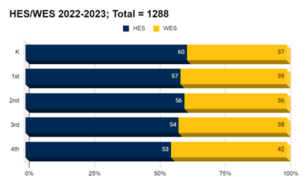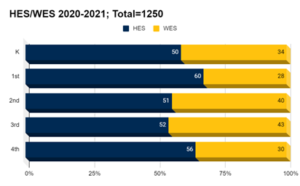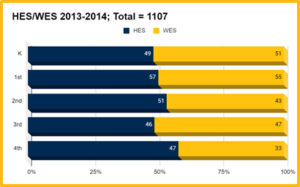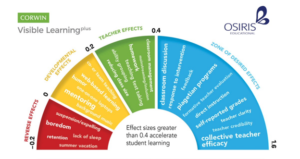School district leadership is considering an adjustment to our program offerings. This alteration would change our current elementaries from offering preschool through fourth grade, to designating each building as a set of specific grade levels (e.g. Humphrey hosting preschool through first grade and Winsted as a second through fourth grade).
We recognize this as a change! However, the reshaping of the program provides opportunities across many aspects of our Strategic Plan. We continue to receive input and feedback from staff members. For our community stakeholders, we offer the following opportunities to learn more and provide input:
- Monday, October 7th from 7:30pm – 8:30pm: High School Media Center
- Wednesday, October 9th from 7:30 – 8:30pm: Winsted Cafeteria
- Monday, OCtober 21st from 7:30pm – 8:30pm: Humphrey Cafeteria
At these listening sessions, information about the proposal will be shared. The balance of the meeting will be an opportunity for stakeholders to share their input. We ask input be shared by answer the following questions:
- What are additional benefits to this proposal?
- What are barriers to implementation?
- What are traditions/programs that should continue?
- What are traditions/programs that should be reprioritized?
Our students continue to struggle, district-wide, with achieving high levels of proficiency in reading and math. The latest school accountability reports look similar to proficiency levels before the pandemic. The lowered readiness of students, higher levels of expected rigor and the organization of our instructional staff prevent our district from achieving and maintaining higher levels of learning for all students.
“We now have compelling evidence that when teachers team up with their colleagues they are able to create a culture of success in schools, leading to teaching improvements and students learning gains. The clear policy and practice implication is that teaching is a team sport” (Fulton & Britton, Teachers in PLCs…, 2011, p.4)
Organizing our elementary school teachers into full, grade-level teams allows the benefits of collaboration to happen to our students and staff. These collaborative teams are critical to implementing best practices, and providing the support students need to learn at high levels. These teams use cycles of instruction, assessment and intervention to be able to guarantee learning for all students. “Reforms must move the system towards early identification and swift intervention, using scientifically-based instruction and teaching methods” (President’s Commission on Excellence in Education, 2002, p.8).
Housing grade-level collaborative teams inside one building provides the environment to develop these collaborative teams. “High-functioning teams schoolwide [are] essential to ensuring improved and inspired learning for all learners – adults and children” (D’Auria, Learn to Avoid and Overcome Obstacles, 2015, p.54).
Transition to 5-12 campus
Community surveys and listening sessions last year brought attention to the difficult transition 5th grade students experience in our district. This is, in part, due to the different classes rising 5th grade students have been attending (i.e. Humphrey and Winsted) now being one grade level, in one building, together. The lack of connections with many of their classmates, while also managing their new life at the 5-12 campus has proven difficult for many. Combining all students across a grade-level into one building throughout their Laker experience increases the community feel of our district and facilitates transitions to different buildings.
Equity across district
Students, families and staff in our district deserve an equitable experience, regardless of where they live. Although our staff tries hard to provide a similar school, there are differences in practice and experiences between the schools that we can/should standardize. For students, their grade-level teams will be better-equipped to provide intervention and enrichment to students by fully using the power of their collaborative teams. Families will be able to expect a guaranteed and viable curriculum with a consistent set of supports regardless of their location within the district. Our collaborative teams will be able to guarantee learning for every Laker. Also, supporting services like mental/physical health, food service and transportation can be provided more consistently to students of similar grade-level and development. Staff members experience more similar case-loads for their students.
During the 23-24 school year, district leadership continued to feel the impact of a structural imbalance to our budget. As noted during the levy campaign, the amount asked for was half of the projected shortfall. We committed to effectively and creatively using our resources to bridge the gap.
THIS SPREADSHEET provides insight on a number of resource-related items. The first sheet provides information about our current budget outlook and projections into the next five years. In addition, there is a projection for the budget impact given the switch to grade-level buildings. The next sheets provide historical data as to recent budget adjustments the district has completed during the 23-24 school year and during the 24-25 school year. The final sheet provides average monthly costs to the district to provide perspective on the money needed, month-to-month to maintain operations.
District leadership feels the move to a grade-level building scheme provides significant savings as to warrant consideration. These cost savings come from reducing 2-3 staff positions. With the switch to grade-level buildings and the different population sizes between Winsted and Humphrey, the district is able to realize these savings while maintaining similar class sizes.
Families move in and out of the district throughout the school year. Under the current set up, there are situations where we push students and families to Winsted for lack of space at Humphrey. With grade-level buildings, our teams will be able to more equitably distribute students and accommodate families that are leaving the district. This idea also applies to students receiving any of our additional services and supports (special education, english language learner, etc.). Our service providers will be better able to specialize for age-appropriate supports and balance case-loads across the district.




The charts demonstrate the imbalance of population between Humphrey Elementary and Winsted Elementary schools. The last time the school was in balance was during the 13-14 school year. This imbalance of students creates an imbalanced need for additional staffing at Humphrey, where the district has previously staffed 5 teachers per section; despite our district-wide student population able to sustain only 4 teachers.
Which alternatives have been considered?
- Maintain current operations as is:
The structural imbalance to our school system will remain. Each passing year becomes more difficult to correct the imbalance without a dramatic loss in programming and services.
- Continue making “corrections” to the budget
The District has made a number of changes to the budget during the past two school years. These corrections include trimming of supply budgets, increases in fees assessed and reductions in staff members. With this option, the District would need to continue to identify $300,000+ in savings; which would include reduction in staff positions.
- Operating levy part 2
During the levy campaign, we communicated the need for the district being closer to $1,200 per pupil. We felt through pragmatic budgeting and careful taxpayer asks, $600 per pupil was reasonable. We are grateful for our citizen’s support of the school. We could use another levy campaign to ask voters to approve an additional levy. The soonest we would be able to consider another campaign would be spring of 2025
- Balancing student populations
Another way to balance student populations could be to draw a boundary line across the district. Families living on one side of the line would attend Winsted Elementary, while families on the other side of the line would attend Humphrey Elementary. Likely, this line would be drawn through Howard Lake; thus, moving many Howard Lake residents to Winsted Elementary. Due to the size of our district, the line may need to be moved each year to accommodate changing student populations. The more-balanced student populations would create opportunities for staff reductions.
- 4 day school week
Over the past years, numerous districts have implemented a four-day school week as a way to realize budget savings. Most of these districts return to a traditional, five-day school week as budget savings centered on utilities and transportation services are short-lived. This option also exacerbates child care shortages in the area.
Community leaders and families in all three towns of the district have been clamoring for additional day-care options for residents. A move to grade-level buildings allows the district to use classroom space more efficiently at Humphrey and Winsted. Thus, we are able to open a number of classrooms in Waverly and Winsted and provide LakerCare within Waverly and Winsted. Also, McLeod county is eager to expand their Head Start program into Winsted. As this is a competitive federal program, and as such there are a lot of rules and expectations surrounding the facility the program is housed in. Winsted Elementary is one of the few facilities in Winsted that would be able to meet most of the Head Start requirements. A Head Start program in Winsted provides additional support to the citizens and students of our community. If McLeod county is able to expand into Winsted, this also provides additional revenue for our district.
Disproportionate population growth across the district and space constraints in our elementary buildings will eventually require the use of attendance boundary lines. The size of our district is such that these lines may need to shift yearly to accommodate changing grade sizes, move-ins, open enrollment and more. These changing boundaries create great uncertainty, especially for families in Howard Lake where the boundary line would likely rest. Naturally, the district could provide exceptions to the boundary line; however, these exceptions are difficult to manage and generate angst and conflict.
Transportation:

Currently, all but three of our bus routes use the 5-12 campus as a hub. Most of our buses could follow very similar routes as they presently do. Buses 16 & 10 (Waverly and Montrose) and 14 (Winsted) could drop off students attending their respective towns early and proceed to the hub. Our in-district student will continue to have a regular bus time of 60 minutes, with most riding on the bus less. Students attending school in their town of residence experience a potentially shorter bus ride.
Since before the Pandemic, and certainly after, instructional staff have struggled with increased community expectations of schools and reduced student readiness. Our staff is dedicated, hardworking and eager to guarantee students learn at or above grade level. However, our mission is more complicated now than ever before. “[Leaders] increase the capacity of others by asking them to work in teams with interdependent relationships… We increase capacity when we work together, rather than in isolation” (Patterson, The Power to Change Everything, 2008, p.183).
Collaboration is both one of our core values and a focus area from the Strategic Plan. Increasing the capacity and efficacy of teacher teams is the central goal of the grade-level proposal.
John Hattie, famed educational researcher, analyzed the results of decades of school initiatives and efforts to increase student learning. His work, titled Visible Learning, ranks these efforts according to effect size. Below is a graphic which has a few of these findings summarized. School actions having an effect size from 0 – .2 have little impact, which cannot be discerned from typical human development. Items between .2 and .4 have a slight impact beyond normal development. Initiatives with effect sizes .4 and beyond accelerated student learning.

The highest effect size on student learning found through this exhaustive research involves collaborative, interdependent teacher teams, able to guarantee learning for all students. These are the actions and initiatives we agreed to focus on as a result of the Strategic Plan. Giving our staff permission to focus their efforts and stop doing things that do not align with our goals provides continued support for staff.


